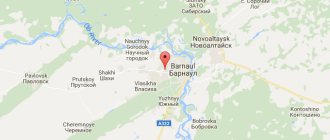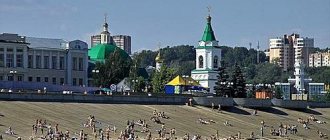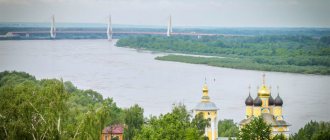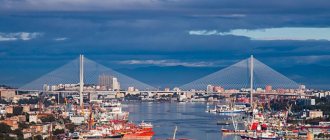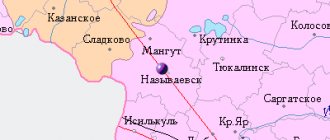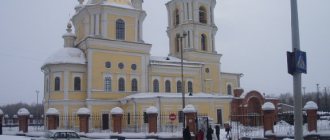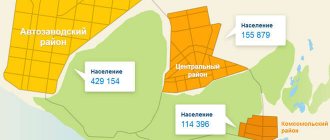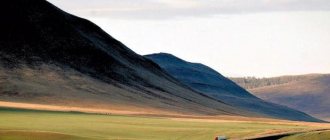The birthplace of Ivan Susanin and the poet Demyan Bedny, the abode of the Snow Maiden and the future Tsar, all this is Kostroma. The ancient Russian city and river port on the Volga is fraught with a rich history and a sea of attractions associated with it. After all, it is here that you can admire religious shrines, the beauty of wooden architecture, objects made of birch bark and listen to the piercing sound of Peter’s toys.
What holiday is it today?
December 16, 2021, Thursday
Today are holidays, events: Events that happened on December 16 in the world, in different years Tomorrow: Day of Strategic Missile Forces Day of Employees of the State Courier Service Memorable date in the military history of Russia: Capture of the Ochakov fortress in 1788
Today is the Orthodox holiday of the Prophet Zephaniah. Reverend Savva of Storozhevsky, Zvenigorod. Martyr Angelis... Tomorrow: Great Martyr Barbara and Martyr Juliania of Iliopolis. Venerable John of Damascus...
Today is a national holiday: Day of World Silence and Silence... Tomorrow: Barbarian Day...
Seasons
Seasons, four periods of the year (spring, summer, autumn and winter) characterized by certain average temperatures. The period during which the Sun passes through one of these sectors is called the season. Spring in the Northern Hemisphere and autumn in the Southern Hemisphere begin when the Sun passes through the initial circle of declination and its right ascension is 0° (vernal equinox). Summer in the Northern Hemisphere and winter in the Southern Hemisphere occur when the sun's right ascension is 90° (summer solstice). Autumn in the Northern Hemisphere and spring in the Southern Hemisphere begin when the sun's right ascension is 180° (autumnal equinox). The beginning of winter in the Northern Hemisphere and summer in the Southern Hemisphere is considered to be the winter solstice, when the direct ascension of the Sun is 270°... Next: Seasons. Russian folk calendar. Monthly words...
Folk calendar about every day
Every day one season always replaces another and this determines a person’s way of life. In connection with this, a folk calendar was formed in which there were practically no nameless, unmarked days. Every day was special, had its own purpose. All this was determined by climate conditions and astrological phenomena.
A calendar is a system for counting periods of time. The first calendars arose a long time ago, in ancient times, because there was a need to measure time. The word calendar comes from the Latin words caleo - to proclaim and calendarium - debt book. This is due to the fact that in Ancient Rome the beginning of each month was especially proclaimed, and because it was customary to pay debts on the first day of the month. Different peoples counted time differently. Some calendars are based on the changing phases of the moon - lunar calendars; in others - the change of seasons - sunny; in others, the length of the year was coordinated with the change of seasons, and the counting of months was associated with the phases of the Moon. Such calendars are called lunisolar.
In Rus', the calendar was called a monthly calendar. Every day, the month book covered the entire year of peasant life, “describing” day by day, month after month, where each day had its own holidays or weekdays, customs and superstitions, traditions and rituals, natural signs and phenomena. The cyclical nature of the calendar is reminiscent of human life, where spring is youth, summer is heyday, autumn is the time of harvesting fruits (it’s good if there are some, otherwise you can live your life without collecting fruits), winter is the time of wisdom and peace. This cyclicality and rhythm determined the way of life of the farmer. The folk calendar was an agricultural calendar, which was reflected in the names of the months, folk signs, rituals and customs. Even the determination of the timing and duration of the seasons is associated with real climatic conditions. Hence the discrepancy between the names of the months in different areas... Next: Folk calendar...
Geographical position
The area where Kostroma is located is located in the central part of Russia, at low latitudes with the same name. The territory is adjacent to five famous regions of the country - Vologda, Ivanovo, Kirov, Nizhny Novgorod and Yaroslavl.
An important water artery of the city is the Volga with its tributary Kostroma. The longest river in Europe divides the settlement into a left-bank and a right-bank part. The terrain is flat, having undergone the Quaternary glaciation of the Dnieper period. Hilly areas give way to ravines and river valleys.
Fishing calendar for every day
The fishing calendar should not be taken as an absolutely indisputable truth. Fish biting is greatly influenced by a whole range of natural factors, as well as the influence on the nature of man himself. You must not forget that the fish’s bite depends and is determined not only by the calendar dates and biological cycles of their life, reflected in the calendar, but also, no less, by the state of their habitat; the bite also depends on weather conditions: air and water temperatures, cloudiness, wind direction and strength, etc... Next: Fishing calendar...
Standard of living
Kostroma is an ordinary provincial city in the Russian outback; it is not a flagship of development and is devoid of most of its industrial potential. In terms of its status, it is a subsidized region, but the standard of living here is quite high (the rating of Russian cities by standard of living can be found by following this link), since for those who want to settle in the city, there is everything necessary:
- the opportunity to rent an apartment in any part of the city at an affordable price;
- hotel rooms ranging from 1 thousand rubles for a single room;
- the likelihood of finding an acceptable job and taking a worthy place in city life.
Life in Kostroma is no worse than in other Russian cities, but it has two important advantages: good ecology (You can find a list of the most environmentally friendly cities in Russia for living by following this link) and a low crime rate.
Orthodox calendar about every day
Orthodox calendar: Orthodox, Church and Christian holidays.
The church year is an alternation of weekdays and holidays. On weekdays, a person is called to work “by the sweat of his brow to earn his bread.” Holidays are given in order to feel liberation, to rise above the bustle and routine of the world, to feel involved in the highest of worlds, “where there are no illnesses, sorrows and sighs, but endless life.” Since ancient times, holiday cycles have been associated with the seasons. The pagans associated them with the worship of the forces of nature, the cult of which in the Old Testament was replaced by gratitude to the Creator for the universe. And although the connection between holidays and the seasons has not completely lost its power, since God is present in everything, in the plant and animal world, in human works, it nevertheless faded into the background, giving way to a spiritual foundation built on the Sacred Scriptures. The history of Orthodox holidays dates back to the times of the Old Testament. Each of the Orthodox holidays is dedicated to the remembrance of the most important events in the life of Jesus Christ and the Mother of God, as well as the memory of saints... Next: Orthodox calendar...
Developed infrastructure
One of the well-developed industries in the city is the textile industry. On the territory of Kostroma there are mainly flax mills, as well as manufactories and factories. In addition, the mechanical engineering industries are also developing successfully, with the production of various equipment for heating, ventilation, heat exchange and energy saving underway. Generally speaking, both heavy and medium engineering industries are developed here.
The industry associated with wood processing, food and light industries does not stand still, and the production of building materials also operates successfully.
Despite its small size, Kostroma is a city with a developed infrastructure, and there are many banks of various companies, supermarket chains and various shopping and entertainment centers located here.
As we noted earlier, Kostroma is a very beautiful city with an ancient history, and there are places here that everyone should visit in their life. Tourism is one of the key areas in the development of the city's economy. Kostroma is included in a popular route among tourists along the Golden Ring of Russia, and pleasure cruises are regularly organized along the Volga. The type of tourism called business tourism is gradually beginning to be popularized, and the initiating firms are organizing various socio-political forums and events, as well as excursions for city guests.
Kostroma is not just a regional center, it is a city with its own history, with its own characteristics. Everyone should visit here and plunge into the history of Russia. You will be delighted by beautiful landscapes overlooking the Volga, you will see all the beauty of the historical city center, and also admire modern new buildings.
Russian folk calendar for every day
The word “sign” comes from the word “notice”, i.e. observe. As a result of observing what happens around a person every day, he accumulates life experience. This knowledge was passed down from generation to generation, carefully preserved and people trusted it as a sacred book. Many signs have come to us from the depths of centuries without losing their knowledge. Each of us is free to choose: to dismiss all this as an absurd superstition or to take a closer look at the signs and take the centuries-old experience of generations more seriously. Most of us, when taking exams, ask them to scold them, boasting about some kind of good fortune or luck, spit so as not to jinx them or knock on wood, take a detour if a black cat crossed the road, are afraid of the number 13 and much more. And who among us does not have lucky things, numbers? Who has never resorted to the help of fate at least once in their life, who has not believed in secrets? It’s as if everything connected with signs is hidden somewhere deep in our subconscious. Often we remember them mechanically, unconsciously, or just as a joke. But, undoubtedly, the signs contain a lot of accurate knowledge and practical wisdom of our ancestors. They cover all the characteristic, often difficult to perceive, natural phenomena. Signs have preserved a lot of what was in old folk holidays and customs; they help predict the weather, grow crops... Next: Folk signs...
General information
The first mention of Kostroma dates back to 1152, its founder was Prince Yuri Dolgoruky. Therefore, it is no coincidence that Kostroma never had independent princes and always gravitated towards Moscow, and in the 14th century it became part of the Moscow principality. Subsequently, the city became famous for the following events:
- It was in the local Ipatiev Monastery that during the period of “turmoil” the future founder of the Romanov dynasty, Mikhail Fedorovich, hid from the Poles;
- Kostroma resident Ivan Susanin accomplished a feat by sacrificing himself when he led a detachment of Poles away from the city and thus saved the future tsar.
During the period of the Empire, Kostroma became a trade and craft center. The textile industry and jewelry making are rapidly developing here; the city itself was a major river port on the Volga.
Currently, it is a small, quiet regional center with a population of 277 thousand people, clean, quiet and cozy, quite suitable for spending at least part of your life here.
Holiday calendar, dates and events of the year
All state and professional holidays in Russia, including significant World and International holidays, and other equally interesting holidays and events about every day.
The holiday has always kept pace with the history of mankind. Social time can be divided into three types: everyday life (weekdays), weekends and holidays. Everyday life is a series of practices repeated day after day and every day (work). Weekends are regular breaks from the rush of everyday life. It is believed that on weekends a person should restore his strength after working days. Day off, non-working day. A holiday is a day of celebration established in honor or in memory of someone or something. A day or series of days celebrated by the church in memory of a religious event or saint... Next: Calendar...
Prayer book, Orthodox prayers for every day
Prayer is the most powerful means for healing all illnesses - both physical and mental. Prayers can be laudatory or grateful, petitionary and repentant. If we have offended God, sinned, we must ask Him for forgiveness, that is, repent. Such prayers are called repentant prayers. If everything is fine with us, if we and our loved ones are healthy and prosperous, if we have a place to live, something to wear, something to eat, we must glorify and thank God for this. Such prayers are called praise or thanksgiving. If some misfortune, illness, trouble or need happens, you need to ask God for help. Such prayers are called petitionary... Next: Orthodox prayers...
Zodiac, astrological, eastern calendar. Zodiac signs
In ancient times, to establish the calendar, priests used knowledge of the positions of all the planets. Before the reform of Peter 1, the New Year was celebrated on the Day of the Autumn Equinox. On this day, according to ancient legend, the most peaceful treaty was concluded between the Great Race (ancient Slavs) and the Great Dragon (ancient Chinese) and it was approximately 7518 years ago... For the ancient Slavs, the calendar month corresponded to the lunar cycle from new moon to new moon, taking into account such Thus, the relationship of the entire annual cycle with astronomical and natural phenomena. There was no coherent calendar system. The main natural phenomena are still considered to this day to be the days of the solar equinox and solstice - the Slavic holidays Maslenitsa, Kupala, Ovsen and Kolyada. But during the time of Peter 1, all ancient Slavic calendars were abolished and a new Western European calendar from the Nativity of Christ (Julian calendar) was introduced, while the beginning of the calendar was moved to January 1. The Julian calendar (old style) did not take leap days into account and accumulated one extra day every 128 years. After the October Revolution in 1918, the Gregorian calendar (new style) was introduced in Russia, according to which an amendment of 13 days was introduced. The calendar of the ancient Slavs was based on two planets: the Sun and the Moon. And now they don’t use anything at all. The calendar has become static. There is no such thing as the calendar, it turns out, resting on some planet. Nobody even knows about it. There are just some standard numbers, there are months and holidays. The calendar is based on the Sun and Moon. Why is this so? Because these two luminaries influence the Earth. The Earth revolves around the Sun, and the Moon revolves around the Earth. And these two luminaries create the atmosphere on the planet. From here the calendar is built... Next: Astrological calendar...
Estates
The nature of the Kostroma region has long attracted aristocrats and creative personalities. For many, it was a matter of honor to have an estate on the land that became the cradle of the Romanov royal dynasty. The list of attractions in Kostroma and the surrounding area includes several historical estates. When traveling around the region, it is worth visiting at least one of them.
In the Shchelykovo estate Photo: © Eduard Skvortsov
Shchelykovo
The most famous and ennobled estate in the region is located 140 km from Kostroma, in the village of Shchelykovo. This is a house with a plot that belonged to the Ostrovsky family. The Russian playwright came here for 4–5 months a year to write plays and relax with his family. It was here, in Shchelykovo, that Ostrovsky passed away. In Soviet times, on the territory of the estate there was first an orphanage, and then a rest home for actors of the Maly Theater.
In addition to the writer’s house with furnishings from the years of his life and Ostrovsky’s personal items, the complex includes a literary and theatrical museum with two exhibitions: “Ostrovsky Theater” with costumes and sets for plays; “The fairy-tale world of the Snow Maiden” is the story of the creation of a fairy tale.
More details: Museum-Estate “Schelykovo”
Ostrovsky's house in Shchelykovo Photo: © Eduard Skvortsov
Sledovo
The estate in Sledovo , located 25 km from Kostroma, is a complex of a picturesque park, residential and outbuildings of the 19th century. The estate belonged to the noble family of the Kartsevs, who settled on Kostroma land in the 16th century. In Soviet times, a biological station was established on the territory of the estate, where students underwent internships. Now people come to Sledovo to see a harmonious and well-kept garden with paths lined with stones, wooden bridges over streams and fish in ponds. The estate hosts the annual Waltz of the Flowers festival.
The tower in Pogorelovo is another architectural landmark of the region. It cannot be classified as a full-fledged estate, and it is not considered a museum. The tower with an abundance of openwork and carved elements was built by a rich fisherman at the beginning of the 20th century. In the 90s, local residents began to leave the village. The tower was saved from destruction by the artist Anatoly Zhigalov, who remained to live in it. Inside the tower, elements of ancient furnishings have been preserved, including paintings on the walls. The village of Pogorelovo is located 180 km from Kostroma (road towards Chukhloma).
Nature of the Kostroma region Photo: © Eduard Skvortsov
Dream books online, interpretation of dreams
A dream book is nothing more than an interpreter of dreams and dreams, a translator of dreams. Since ancient times, people have been using dream books; dreams have always been given great importance, and people have often noticed the prophetic properties of some dreams. The dream book can become your faithful assistant every day and throughout your life, thanks to the dream interpreter you can always make the right decisions, the dream book will help you resist temptations in time, and will warn you against wrong steps and frivolous actions. Further…

